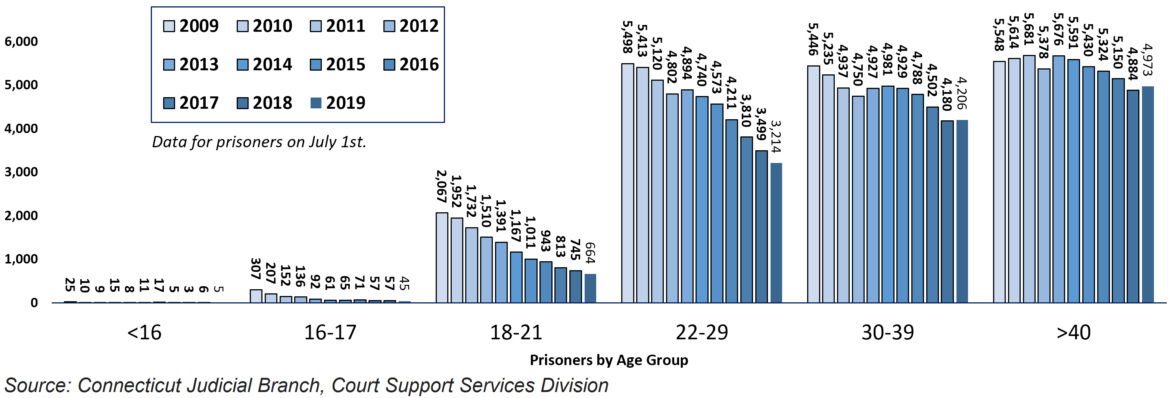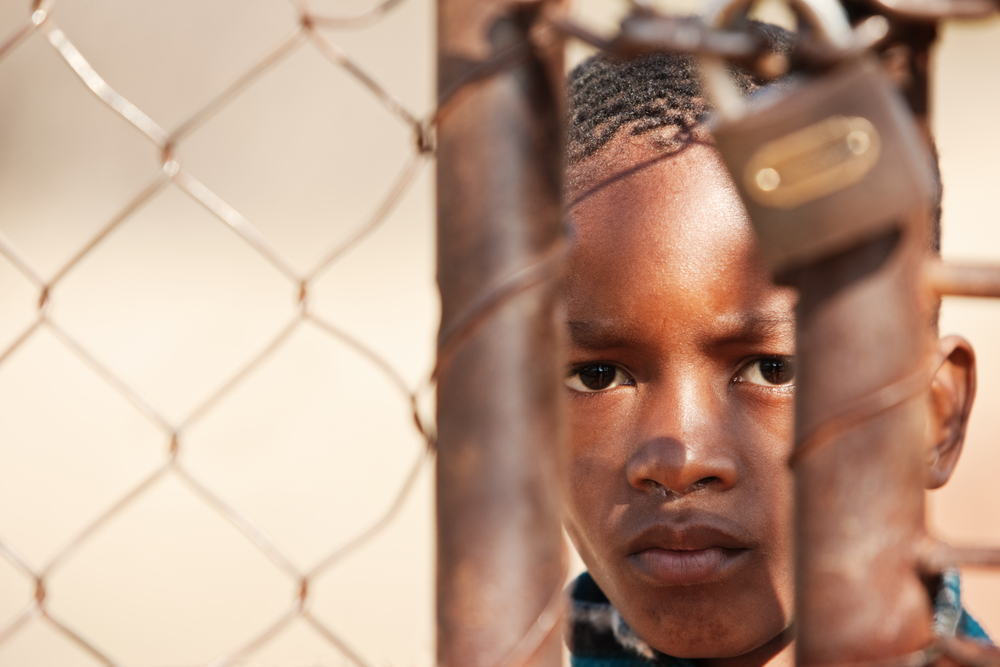![]() The alleged involvement of 13- and 14-year-olds in the senseless murder of a young college student in New York City last month is a heartbreaking reminder that, despite a decade of monumental youth justice reforms, much work remains to help and heal our most troubled children.
The alleged involvement of 13- and 14-year-olds in the senseless murder of a young college student in New York City last month is a heartbreaking reminder that, despite a decade of monumental youth justice reforms, much work remains to help and heal our most troubled children.
The end of the decade should be a time to celebrate 10 years of youth justice reforms nationally and locally that have seen a continuing drop in juvenile arrests, adjudications and out-of-home placement — without a rise in youth crime. Eleven states have raised the age that a child can be adjudicated as an adult. Youth prisons are closing. More children and adolescents are being diverted from court and served by community programs.

Diane Sierpina
More schools are reducing suspensions, expulsions and arrests. Advocates and progressive policymakers are working together to address collateral issues, such as the transfer of juveniles to the adult criminal system, youth homelessness and conditions in facilities. Of course, much more needs to be done and funded, but we deserve to cheer the gains successfully achieved.
In Connecticut, one of the two states in which The Tow Foundation primarily invests, the impact of justice reform has been outstanding. Connecticut began its raise the age movement in 2005, with 16-year-olds returning to the juvenile system in 2010 and 17-year-olds in 2012. The results here, after 10 years, have debunked the opposition’s concerns that the juvenile system would double in size and that crime would increase. Neither happened and other states noticed. Over the last decade, 10 other states have raised the age of adult jurisdiction to 18, including New York in 2018. The remaining three that have yet to raise the age are seriously working on it.

In 2010, 15,821 youths age 17 and younger were arrested in Connecticut. In 2018 (the latest data available from the state Office of Policy and Management [OPM]), the number was 7,284, a drop of 54%. In 2019, the number of youth ages 17 and younger incarcerated in adult prisons dropped 77% and committed to the state’s juvenile system as delinquent dropped 61% compared to 2010 figures from the Court Support Services Division of the state Judicial Branch. In 2001, the state opened a 240-bed prison for children under age 16 modeled after an adult prison in Ohio. In 2018, this facility was closed, making Connecticut one of two known states to have no youth prison.

Connecticut officials say the shrinking of the juvenile system as a result of raise the age-related policy reforms and reductions in school suspensions and expulsions has had another major impact — the number of 18- to 21-year-olds in the adult system has dropped 66% from 2010 to 2019 (from 1,952 to 664), according to OPM. We agree with advocates that the time is right to raise the minimum age of juvenile jurisdiction from 7 to 12 and the maximum age higher than 17.
Policymakers, advocates and funders have begun to realize that justice policy reform alone will not improve outcomes for youth with high needs and high risk of breaking the law. More attention needs to be paid to the root causes of delinquent behavior. Recent research has tied maltreatment in the home to future delinquent behavior. Other research has pointed out the consequences of exposure to violence in the community or home, poor nutrition, failing schools, homelessness, mental health and substance abuse, tying them to future delinquency.
The Connecticut Juvenile Justice Alliance’s Justice Advisors, young adults personally impacted by the juvenile justice system, held a series of focus groups in 2019 with youth around the state and identified seven root causes of justice system involvement that they want addressed:
- economic insecurity
- housing insecurity
- trauma within communities
- lack of trust in systems
- absence of enough positive influences and credible messengers in their lives
- lack of hope
- lack of equal opportunities for low-income communities of color compared to white communities
The youth rightly say that multiple public systems have failed to provide a safe, stable environment, forcing them and their peers to make hard, no-win choices that often lead to justice system involvement. Theirs are the issues that need to be addressed and theirs are the voices that need to be heard in the next decade. None of this work will be easy, nor will it be inexpensive. And despite what some policymakers or even funders may say, youth justice reform is far from finished and their investments are critical to sustain the gains and build on them.
There is now rumbling from opponents of justice reform that the needle has been pushed too far. That young people are getting away with few consequences for poor behavior and that law enforcement’s hands are tied. The December murder could provide momentum to the anti-reformers. In 2007, a home invasion and murder of a mother and her two young daughters nearly derailed Connecticut’s proposed policy changes, but reformers rallied and protected them.
Elections too have consequences. Connecticut and New York have solid Democratic majorities in their state legislatures that endorse broad youth and adult justice reforms. A change in numbers this November may cause a pause in reform, or worse yet, repeal of hard-fought policy wins.
It is time, in this new decade, to recommit to the ideals that kids are different from adults and should be treated as children when punished for their actions and behavior, even when those actions are violent. Even youth charged with violent crimes have the capacity to be rehabilitated and to become assets to their communities and society.
We also have to constantly recognize, acknowledge and address the racial inequity that permeates the justice system and perpetuates the nation’s huge affinity for and investment in incarceration at the expense of social services, dignity, harm reduction and restorative justice.
The pain suffered by victims of violent crime is immeasurable. But if our pledge as a society is to be fair and just to all involved, we must acknowledge that offenders were likely victims first and carry their own traumas. Advocates, policymakers and funders need to partner with and listen to communities impacted and abused by the justice system. They know best what services and policy reforms they need to heal the harm and right the wrongs. Let’s help and support the health and well-being of families so that no young person ever victimizes or takes the life of another.
Diane Sierpina joined The Tow Foundation in 1998 and currently serves as the director of justice initiatives. She has been an advocate of evidence-based, youth-centered justice system reform in Connecticut, New York and nationally for more than 20 years.

Thank you for working towards recognizing that not everyone has had a positive life experience as a child. And children are children some longer than others. So many people are not mentally mature even as an adult of 24. How many kids in college do dumb things and even after college? We still do dumb things because of our mental maturity and social interactions we are privy to have. You are a product of your environment. I feel bad for children who have been raised hard in harsh violent conditions. They act out what they know and have seen. This is their only choice. They dont know of another. This is their reality. They dont understand the true repracutions of their actions to the point they can evaluate with the proper forthought and make wise decisions. And maybe to those committing the crime it’s their only choice in order to survive. I could go on for ever. I’m passionate about this subject and the whole justice system and how it so quickly will wrongfully convict people and send them away but are very slow to correct that wrong. There is a man Edwin Sanchez who is currently in Cheshire prison that was wrongfully convicted when he was 19 years old in CT for a crime that he witnessed between gang members and the prosecuitor secured false testimoney by exchanging the false testimony with erasing someone’s haroine charges to convict this man and protect that gang. She is now a judge in CT. He has been in prison 26 years now and he fights to this day to he free. And even with eyewitness testimoney and the witness coming forward to admit he lied, the court will not right their wrong. His children grew up with out a father. He grew up never seeing his children or grandchildren as of yet. So very sad. He is a good man. CT is in need of reform. Thank you for your help. If you would like to discuss Edwin Sanchez or know someone interested in his story you have my email address. His attorney and private investigator who has been kn his case for over 15 years, will also talk to you about this injustice. They know the true story. It’s real. God bless you and good luck with your cause.
Gena